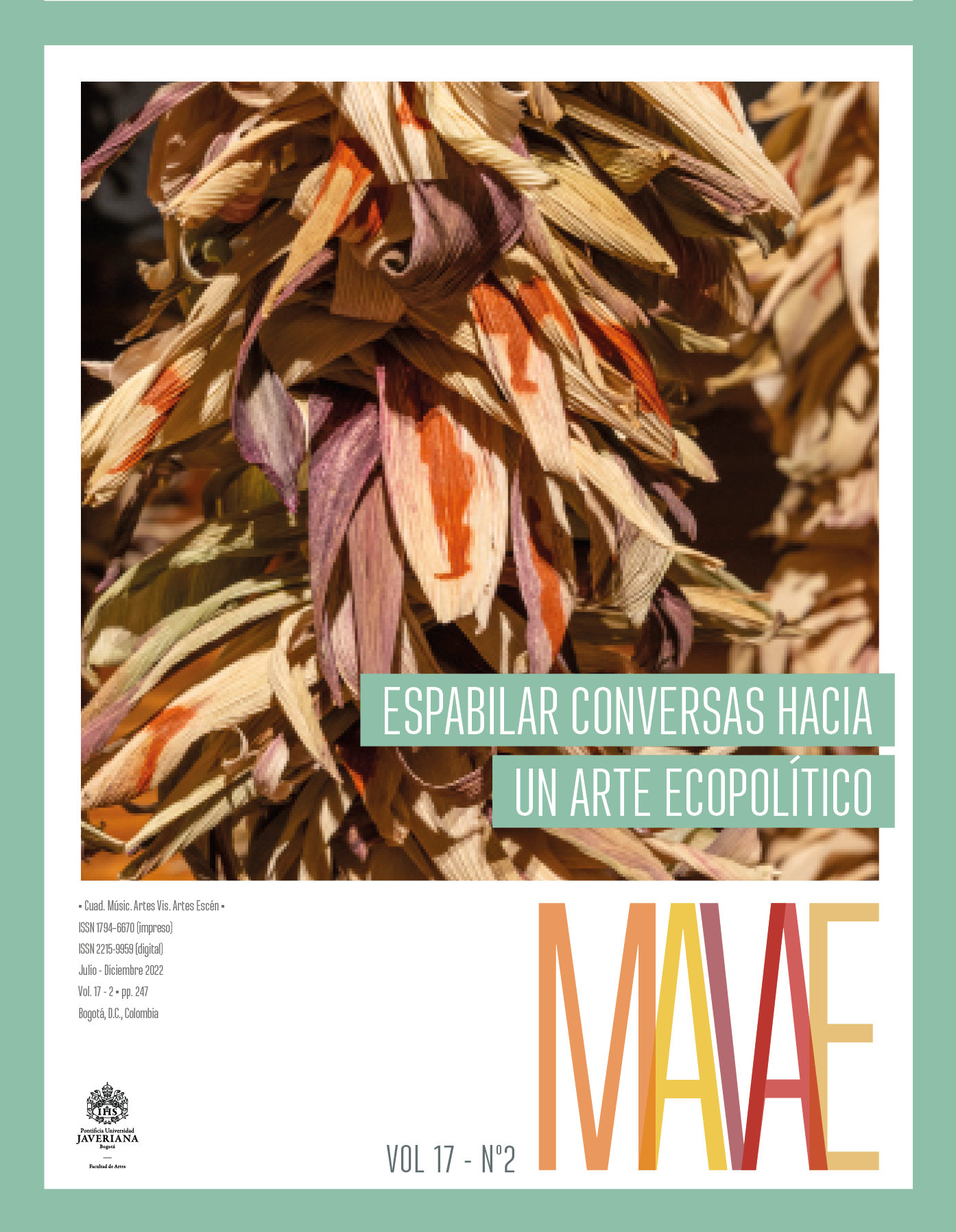Abstract
The social meanings associated with the notions of illness and pain have usually been recognized as out-of-body experiences, they are identified as intrusive or as something to be avoided, healed or cured. This perspective has grown due to “the culture of happiness” that has grown increasingly stronger and which has prevented the terrestrial nature of human bodies from being included in ecological perspectives of diagnoses. Thus, the paper seeks to share the traces of my experience with the disease, some revelations discussed with the Chulajuan (a nature reserve), the palm tree in the corner of my living room, and some authors and friends that enabled an ecological view of how to approach human problems. I will also share the reflexive contact that such revelations generated and the clues that I have been building in connection with the practices as an improviser of the living arts and as a psychotherapist. Finally, the paper proposes the inclusion of the ecological practices of the living arts, such as improvisation and wandering, as a way to cross disciplines, expand listening to living and non-living, human and non-human organisms in our journeys as beings of planet Earth. It also shows passion as a clue that dissolves the stereotyped and binary posture of the rational-human and the wild-animal/plant and, on the contrary, resists the logic of discipline typical of the culture of magic formulas, happiness as the ultimate goal and individualism as the triumph of the neoliberal model.
Cabanas Díaz, Edgar y Eva Illouz. 2019. Happycracia: Cómo la ciencia y la industria de la felicidad controlan nuestras vidas. Barcelona: Paidós.
Coccia, Emanuele. 2017. La vida de las plantas: Una metafísica de la mixtura. Buenos Aires: Miño y Dávila.
Coccia, Emanuele. 2021. Metamorfosis: La fascinante continuidad de la vida. Madrid: Siruela.
Condró, Lucas y Pablo Messiez. 2016. Asymmetrical-Motion: Notas sobre pedagogía del movimiento. Madrid: Continta me tienes.
Haraway, Donna. 2019. Seguir con el problema: Generar parentesco en el Chthuluceno. Bilbao: Consonni.
Illouz, Eva. 2012. Por qué duele el amor: Una explicación sociológica.
Madrid: Katz.
Instituto Humboldt. 2017. “Composición florística de tres fragmentos de bosque altoandino en los alrededores de la sabana de Bogotá”. http:// repository.humboldt.org.co/bitstream/handle/20.500.11761/34202/17- 028PS-Munoz_Juan.pdf?sequence=1&isAllowed=y
Maillard, Chantal. 2019. La baba del caracol. Madrid: Vaso Roto.
Maturana, Humberto. 2019. “Parte 3: Amar es dejar aparecer”. https:// www.youtube.com/watch?v=DOMoARrkakM.
Melero Martínez, José María y Carmelo Blanco Mayor. 1991. “Walter Benjamin, el angelus novus como alegoría de la Historia”. Ensayos: Revista de la Escuela Universitaria de Formación del Profesorado de Albacete, n.º 5: 47-67. https://redined.educacion.gob.es/xmlui/ handle/11162/20085
Nancy, Jean-Luc. 2003. Corpus. Traducido por Patricio Bulnes. Madrid: Arena. Quignard, Pascal. 2017. El origen de la danza. Buenos Aires: Interzona.
RAE (Real Academia Española). 2014. “Quiasma”. En Diccionario de la lengua española. https://dle.rae.es/quiasma.
Tafalla, Marta. 2019. Ecoanimal: Una estética plurisensorial, ecologista y animalista. Madrid: Plaza y Valdés.
Vásquez Rocca, Adolfo. 2008. “Las metáforas del cuerpo en la filosofía de Jean-Luc Nancy: Nueva carne, cuerpo sin órganos y escatología de la enfermedad”. Nómadas: Critical Journal of Social and Juridical Sciences 18, n.º 2. https://www.redalyc.org/pdf/181/18101819.pdf.

This work is licensed under a Creative Commons Attribution 4.0 International License.


